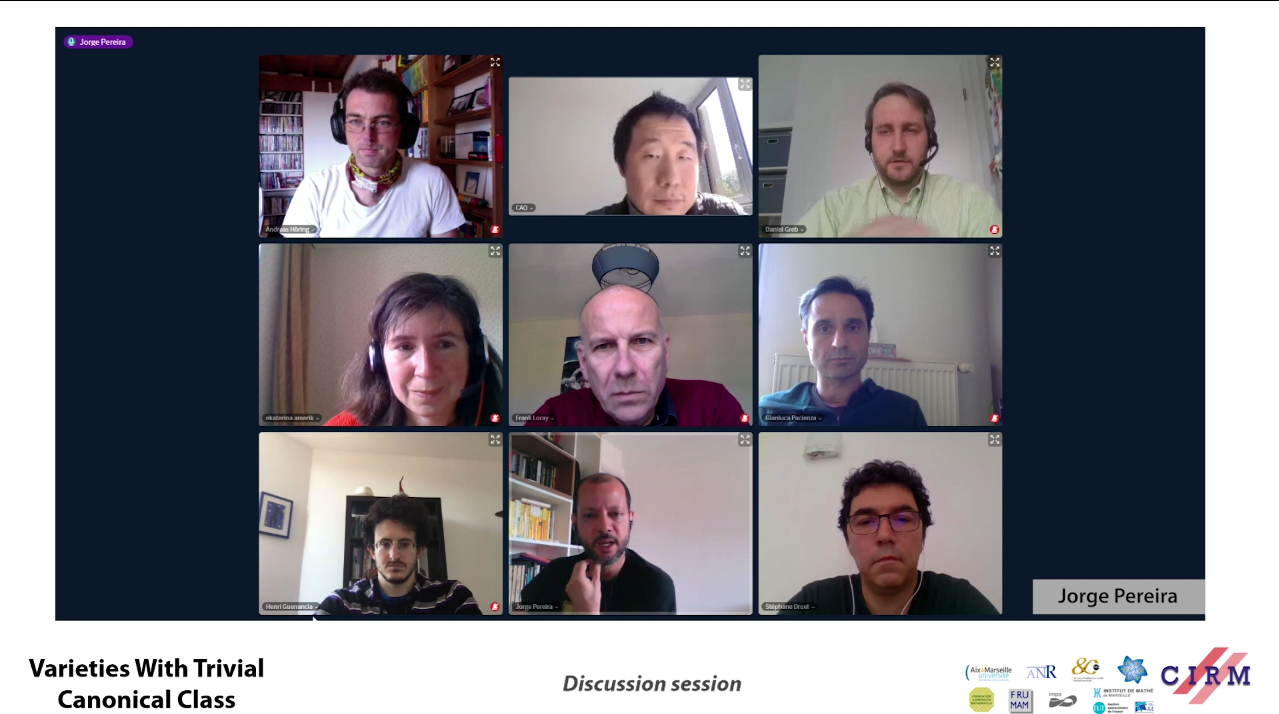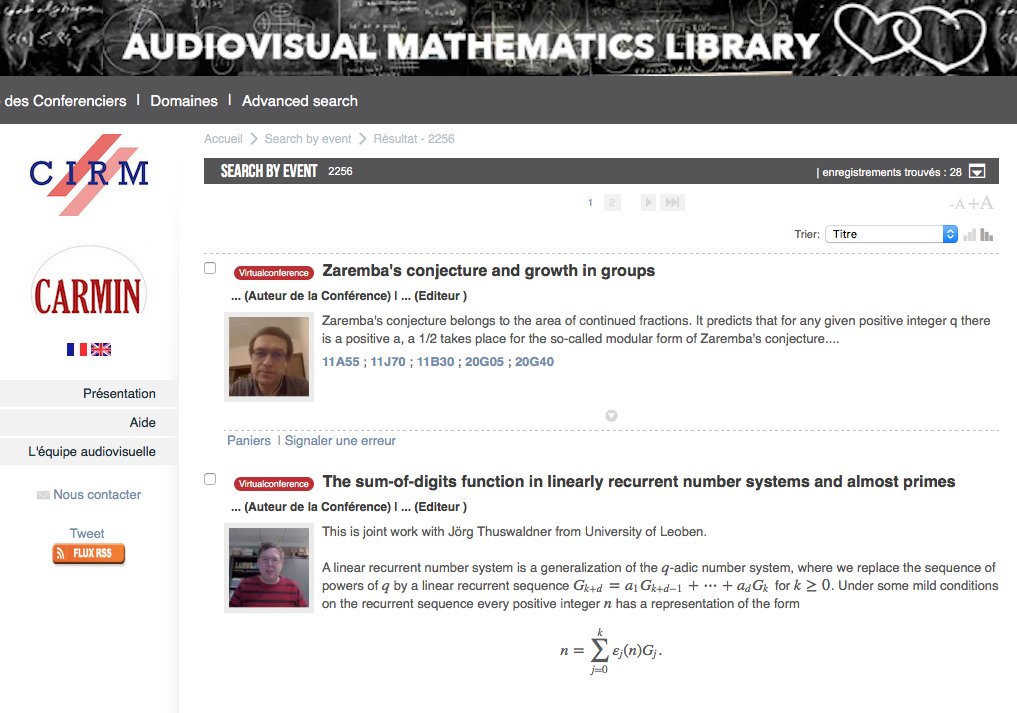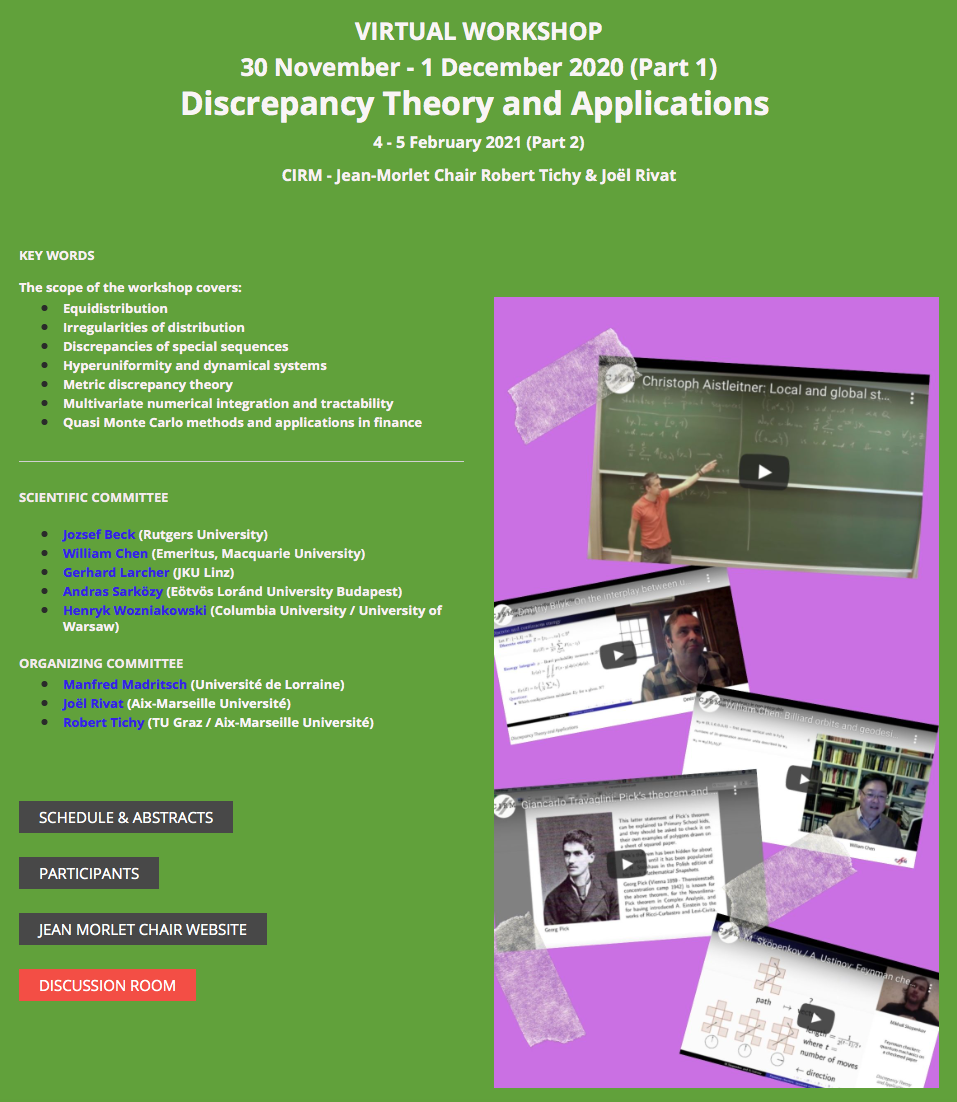|
Health crisis: Digital shift and new types of events
Between the sudden announcement of the first lockdown in the spring, the return to onsite events with a strict protocol to follow and borders between countries still closed, and finally a second lockdown in the autumn, CIRM, whose very essence is to organise and host nearly a hundred international scientific events each year, has had to adapt and organise new types of events in new formats: hybrid and virtual. A few words to explain… Managing cancellations, attempting to postpone to better days… Our very first task was to manage this crisis, accompany panic-stricken organisers, build, unbuild and rebuild a complicated calendar. Then there was the need to continue with CIRM’s activity without waiting, so that exchanges could continue. Very quickly apprehend new tools, familiarise the team and the participants who had cancelled their visits with digital technology, etc… Thanks to an already-solid technical environment, CIRM was able, as early as March 2021, to deploy a multi-layered ecosystem to hold virtual events: this involves a secure videoconferencing system (BigBlueButton) installed on CIRM’s own servers, a dedicated team to support the researchers, and an adapted audio-visual production and distribution method: remote capture of each event, online video posting, organisation of virtual chat rooms, cataloguing of audio-visual documents, etc. Jorge Vitorio Pereira (Jean-Morlet Chairholder – Semester 1) talks about his experience with virtual events in an interview given to the CNRS South America Office.
The return on site, with many major international conferences cancelled, strict health regulations, and events conjuring some present and some remote participation have led CIRM to move from virtual to hybrid. Thus, scientific reception areas have been entirely adapted to this new type of event: videoconference system, double screens, audio and video systems have been installed in four different rooms.
Thanks to its already large experience, to the implementation of new, adapted procedures and to an enhanced digital work environment, CIRM was once again able to set up a second wave of virtual events at the announcement of a second lockdown. This crisis shows CIRM to be very reactive and keen to adapt. New skills and integrated new solutions have been built into its offer. These new services are now part of the daily running of the centre, its savoir-faire, even its identity, and this goes well beyond the health crisis. They help anchor CIRM in an eco-responsible and sustainable approach. |
New services to keep exchanges going
CIRM has been operating for almost forty years thanks to the support of its trustees and partners and to the invoicing of board and lodging costs. The cancellation of so many events in 2020 naturally led to a collapse of CIRM’s own resources, those linked to board and lodging in particular. However, the activity has not stopped and the team is on deck to manage this crisis and develop new tools and procedures. The health crisis of 2020 and the uncertainty of 2021 have led us to set up a new billing system for new services, so that CIRM can continue its activity, and continue to be a precious international tool supporting research in mathematics and its interactions. Rates
(validated by CIRM’s Management Board on 18 November 2020) Setting up a hybrid conference: €5,000Setting up a virtual conference: €10,000 Registration per person for remote participation: €5 Setting up a chat room: €200 This comes to a total between k€5 and k€6 for hybrid events and k€10 to k€12 for virtual events. Exemptions : For a subsidized conference or research school, videoconferencing is supported by CIRM as long as the total subsidy does not exceed the one allocated when the event was selected. For all other programs, a discussion takes place between the organizers and the events department. When the number of onsite participants is lower than expected, the level of support changes for subsidized events. Below is the new funding available according to the number of participants accommodated. 5 participants – 1 funded Below 5 participants, CIRM will not give any subsidy. Beyond 5 participants, the number of stays subsidized is that of the nearest multiple of 5. |






